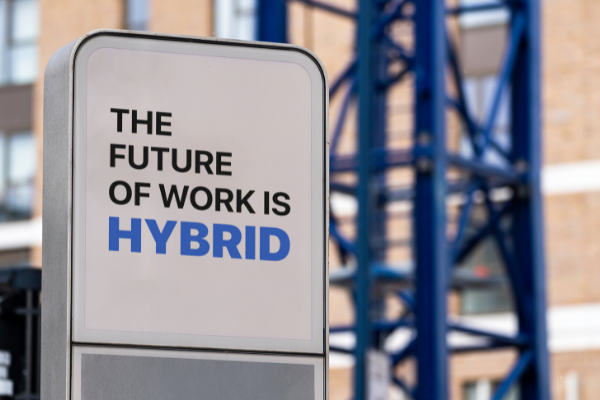Insights
INSIGHTS
All Topics
How to prioritise wellbeing at work
From setting boundaries to getting out in nature, here are some tips to help charity professionals look after their mental health in 2025
It’s easy to set goals for the new year, but it can be hard to stick to them. If there’s one resolution that we should all try and keep in the year ahead, it’s looking after our wellbeing at work.
When you’re dealing with competing deadlines at work, communicating with colleagues, and managing the distractions of a busy office, it’s easy for your mental health and wellbeing to slide down the list of priorities. Data shows that 35.2 million working days were lost to work-related ill health in 2022-23, with stress, anxiety and depression making up almost 24 million of these.
For those working in the charity sector, it’s been a tough few years. Both Covid-19 and the cost-of-living crisis have reduced budgets and increased demand for services. This has increased the workload and stress of people working in charities, especially those in smaller organisations.
Prioritising your mental health shouldn’t just be something you think about when you’re feeling anxious. By looking after your wellbeing all the time, you can prevent stress and burn out.
Below, we explore some helpful ways you can prioritise your wellbeing this year and beyond.
Prioritising mental health in the workplace
Create boundaries between work and personal life
There are a lot of benefits to working from home, but one of the big challenges is that the boundaries between work and home life can blur.
An article from the Directory of Social Change (DSC) recommends creating a physical boundary to separate home and work. For example, working in a separate room to where you relax and hangout, or using a room divider to split up the room so you have separate office space
Mental health charity Mind says that a commute gives you the time to wind down from work. If you work from home, you don’t get this downtime to relax. Create your own commute by going out for a walk before work and then when you finish for the day. This can help you to stay focused on work when you need to be and then switch off for the evening.
Other ways to reinforce boundaries is to not work outside of your working hours and remove work emails from personal devices. This can reduce overwhelm and stress.
Take your lunch break
It sounds obvious but make sure you have your lunch break. Lots of us are guilty of working straight through our break and eating at our desks. But Mind says that having a lunch break can make you feel more productive and help you to stay well.
Take care of your physical health
Looking after your physical health will positively impact your mental health and wellbeing at work. Try doing at least 30 minutes of exercise each day, whether it’s going for a walk on your lunchbreak or riding your bike to the office.
Also, instead of pouring a glass of wine after work, try doing some mindfulness and breathing exercises to help reduce stress.
Get out in nature
Research shows that connecting with nature improves your mental health. The fresh air allows more oxygen to get to your brain, which increases your brain power. Being in nature is also calming and reduces stress levels.
Catch up with colleagues
With more people working from home these days, there are fewer opportunities to chat to colleagues. Social isolation is proven to affect your mental wellbeing. To reduce the risk of staff feeling isolated, the DSC suggests that people connect with colleagues they don’t usually get to interact with day-to-day.
Also, the charity suggests organising online events for staff to socialise during and after work and setting up an online space to “emulate water cooler chat”. The DSC has a dedicated wellbeing channel on Teams where people can share things that aren’t about work.
Understanding employer responsibility
Everyone needs to prioritise their own wellbeing. But employers also have a legal responsibility to support their staff. This is called ‘duty of care’, which means they must do all they reasonably can to support their employees’ health, safety and wellbeing.
When employers look after the wellbeing of their staff, it can help to prevent stress and support people to thrive. This is also good for business as it helps to boost engagement, motivation and performance.
Here are some things that employers could consider:
-
Introducing a four-day working week. For example, organisations including the DSC have moved to a four-day week
-
Giving staff mental health days so they can take time off to look after their wellbeing. This shows people that wellbeing is a priority for the organisation
-
Providing mental health training for staff. If managers practice being positive role models and prioritise their mental health and wellbeing, it shows staff they should be doing the same
Kellie Smith
More on this topic
Recommended Products
Our Events
Charity Digital Academy
Our courses aim, in just three hours, to enhance soft skills and hard skills, boost your knowledge of finance and artificial intelligence, and supercharge your digital capabilities. Check out some of the incredible options by clicking here.





















